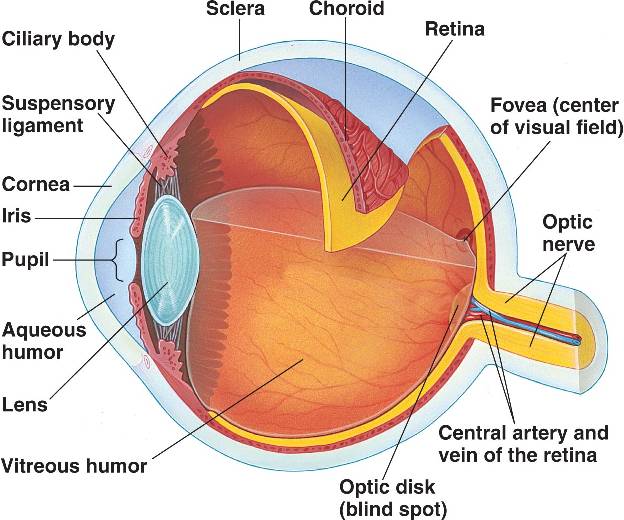 |
| Image source: http://bio1152.nicerweb.com/Locked/media/ch50/eye.html |
Introduction to How the Human Eye Works
Light enters the eyes through the pupils – light rays pass through the cornea and the lens before reaching the retina located at the very back of the eye. An image is formed on the retina, which is converted into electrical impulses by cells in the retina, and neurones carry the impulses to the brain where they are interpreted. The amount of light that reaches the retina is controlled by the iris, controlling the size of the pupil.
Basic Structure of the Eye
The iris is the coloured part of the eye, made up of muscles that control the size of the pupil, therefore controlling the amount of light entering the eye. The cornea is a transparent 'window' with a convex shape, in order to focus the image.
Light is focused on the retina by the lens and cornea working together – the cornea has a fixed power, although the lens can change its focusing power (by changing shape).
The lens is controlled by ciliary muscles: when they contract, the lens is fatter and more spherical in shape, whereas when these muscles relax the lens becomes thinner and flatter.
The retina is covered in light-sensitive cells that detect light and send electrical impulses to the brain using the optic nerve.
Near and Far Points
The near point is the closest distance that the eye can focus on. For an average adult, it's around 25cm. The far point is the furthest distance that the eye can focus on comfortably. This is infinity for most people, as we can focus on all distant objects.
No comments:
Post a Comment